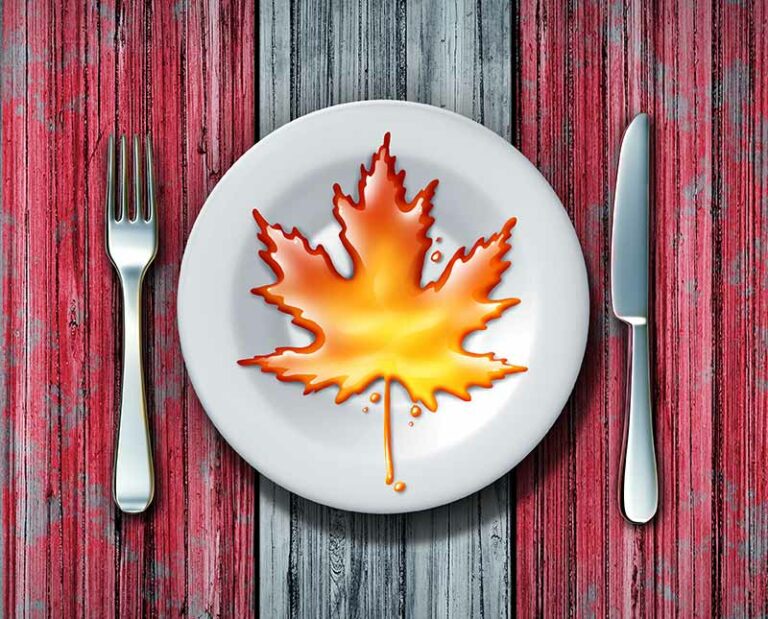Introduction: Defining Canadian cuisine
Defining Canadian cuisine is a difficult task due to the vastness of the country and the diverse cultures that have influenced its food culture. Canadian cuisine is a fusion of various ethnic cuisines that have come together to create a unique food culture. The cuisine is influenced by English, French, Scottish, Irish, Indigenous peoples, and immigrants from all over the world.
Influences on Canadian cuisine
The food culture of Canada has been shaped by the country’s history. The Indigenous peoples have played a significant role in shaping Canadian cuisine. The arrival of Europeans in Canada brought about the introduction of new ingredients and cooking techniques. The French and British have had a significant impact on Canadian cuisine, each contributing their unique culinary traditions. Canada’s immigrant population has also contributed to the country’s food culture, bringing with them their own food traditions.
Regional differences in Canadian cuisine
Canada is a vast country with significant regional differences. The country’s regional differences are reflected in its food culture. The cuisine in the eastern provinces is heavily influenced by French and British traditions. The western provinces have a more diverse food culture influenced by Indigenous and Asian cuisines. The cuisine in the northern provinces is heavily influenced by Indigenous traditions, with a focus on fish and game.
Native Canadian dishes and ingredients
The Indigenous peoples of Canada have a rich culinary tradition that has contributed significantly to Canadian cuisine. Some of the most popular dishes include bannock, pemmican, and wild game such as moose and caribou. The use of wild berries, herbs, and plants such as wild rice and maple syrup is also prevalent in Indigenous cuisine.
French-Canadian cuisine: Tourtière and poutine
French-Canadian cuisine is a significant influence on Canadian cuisine. One of the most popular dishes is tourtière, a savory meat pie traditionally made with pork and beef. Poutine, a dish of French fries, cheese curds, and gravy, is another staple of French-Canadian cuisine and has become a Canadian icon.
English-Canadian cuisine: Butter tarts and Nanaimo bars
English-Canadian cuisine is also an essential influence on Canadian cuisine. Butter tarts, a small pastry shell filled with a mixture of butter, sugar, and eggs, are a popular dessert in Canada. Nanaimo bars, a dessert made of chocolate, custard, and coconut, are also an English-Canadian favorite.
Canadian fusion cuisine: Montreal-style bagels and peameal bacon
Canadian fusion cuisine is a blend of various cultural traditions. Montreal-style bagels, which are smaller and denser than New York-style bagels, are an example of fusion cuisine. Peameal bacon, also known as Canadian bacon, is a fusion of British and Canadian cuisine and is made from lean pork loin that is cured and rolled in cornmeal.
Conclusion: The search for a Canadian signature dish
Despite the significant influences on Canadian cuisine, there is no single signature dish that defines Canadian cuisine. Canada’s vastness and diverse cultural heritage have contributed to a unique food culture that is constantly evolving. However, dishes such as poutine and butter tarts are considered Canadian classics and are enjoyed across the country. Canadian cuisine is still searching for its identity, but its diversity and richness make it a food culture worth exploring.

